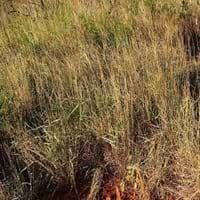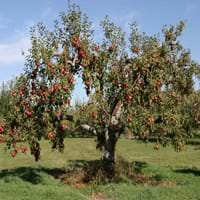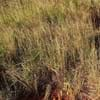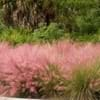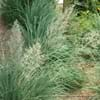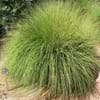Life Span
Perennial
Perennial
Origin
Hybrid origin
Eastern Europe, Southern Europe, Russia/Siberia, Southern Asia, Western Asia
Types
Eulalia bicornuta, Eulalia hirtifolia
Not avaialable
Number of Varieties
Not Available
Habitat
Grassland, Hillside
Hillside, Mountain Slopes, Temperate Regions
USDA Hardiness Zone
5-9
5-8
Sunset Zone
2a, 2b, 3a, 3b, 4, 5, 6, 7, 8, 9, 10, 11, 12, 13, 14, 15, 16, 17, 18, 19, 20, 21, 22, 23, 24
2a, 2b, 3a, 3b, 7
Habit
Clump-Forming
Oval or Rounded
Flower Color
Orange, Orange Red, Red, Violet
White, Pink
Flower Color Modifier
Bicolor
Bicolor
Fruit Color
Non Fruiting Plant
Red
Leaf Color in Spring
Gray Green
Green
Leaf Color in Summer
Light Green
Green
Leaf Color in Fall
Purple, Bronze, Orange Red
Green
Leaf Color in Winter
Tan
Light Green
Leaf Shape
Grass like
Oblong
Plant Season
Spring, Summer, Fall, Winter
Spring, Fall
Sunlight
Full Sun
Full Sun, Partial Sun, Partial shade
Type of Soil
Clay, Loam, Sand
Clay, Loam
The pH of Soil
Acidic, Neutral, Alkaline
Acidic, Neutral
Soil Drainage
Average
Well drained
Bloom Time
Late Summer, Early Fall, Fall
Early Spring, Spring
Tolerances
Drought, Dry soil
Drought
Where to Plant?
Ground
Ground
How to Plant?
Divison, Seedlings
Grafting, Seedlings, Transplanting
Plant Maintenance
Low
Medium
Watering Requirements
Requires regular watering, Requires watering in the growing season, Water daily during growing season, Water more in summer
Medium
In Summer
Lots of watering
Lots of watering
In Spring
Ample Water
Moderate
In Winter
Average Water
Average Water
Soil pH
Acidic, Neutral, Alkaline
Acidic, Neutral
Soil Type
Clay, Loam, Sand
Clay, Loam
Soil Drainage Capacity
Average
Well drained
Sun Exposure
Full Sun
Full Sun, Partial Sun, Partial shade
Pruning
Prune if you want to improve plant shape, Prune to control growth, Remove damaged leaves, Remove dead leaves
Remove damaged leaves, Remove dead branches, Remove dead leaves
Fertilizers
All-Purpose Liquid Fertilizer, Less fertilizing
All-Purpose Liquid Fertilizer
Pests and Diseases
Pest Free, Pests and diseases free, Red blotch
Black rot, Leaf spot, Scab
Plant Tolerance
Drought
Drought
Flower Petal Number
Single
Single
Foliage Texture
Fine
Medium
Foliage Sheen
Matte
Matte
Attracts
Bees, Butterflies
Birds
Allergy
Mold, Pollen, Skin irritation
Mouth itching, Throat itching
Aesthetic Uses
Ground Cover, Landscape Designing
Not Used For Aesthetic Purpose
Beauty Benefits
No Beauty Benefits
Not Available
Environmental Uses
Air purification, Amazing growth rate, Erosion control, Food for insects, No fertilizer, pesticides, or herbicides needed, Prevent Soil Erosion, Shelter for wildlife, Soil protection, Wildlife, Windbreak
Air purification
Medicinal Uses
Diuretic
Cancer, constipation, Diabetes, Diarrhea, Dysentry, Fever, Heart problems, Tooth ache
Part of Plant Used
Leaves
Fruits
Other Uses
Showy Purposes, Used in biomass
Used As Food, Wood is used for making furniture
Used As Indoor Plant
No
No
Used As Outdoor Plant
Yes
Yes
Garden Design
Dried Flower / Everlasting, Container, Cutflower, Feature Plant, Foundation, Mixed Border, Screening / Wind Break
Edible, Feature Plant, Fruit / Fruit Tree, Topiary / Bonsai / Espalier
Botanical Name
MISCANTHUS 'Purpurascens'
MALUS domestica 'Red Delicious'
Common Name
Eulalia, Japanese Silvergrass, Purple Silvergrass
Apple, Red Delicious Apple, Red Eating Apple
In Hindi
Eulalia
लाल स्वादिष्ट सेब
In German
Eulalia
Red Delicious
In French
Eulalia
Red Delicious
In Spanish
Eulalia
Manzana Red Delicious
In Greek
Eulalia
Red Delicious μήλο
In Portuguese
Eulalia
Red Delicious apple
In Polish
Eulalia
Red Delicious jabłko
In Latin
Eulalia
Red Delicious apple
Phylum
Embryophyta
Magnoliophyta
Class
Liliopsida
Magnoliopsida
Clade
Angiosperms, Commelinids, Monocots
Angiosperms, Eudicots, Rosids
Tribe
Andropogoneae
Not Available
Subfamily
Panicoideae
Not Available
Number of Species
Not Available
Importance of Eulalia and Red Delicious Apple
Want to have the most appropriate plant for your garden? You might want to know the importance of Eulalia and Red Delicious Apple. Basically, these two plants vary in many aspects. Compare Eulalia and Red Delicious Apple as they differ in many characteristics such as their life, care, benefits, facts, etc. Every gardener must at least have the slightest clue about the plants he wants to plant in his garden. Compare their benefits, which differ in many ways like facts and uses. The medicinal use of Eulalia is Diuretic whereas of Red Delicious Apple is Cancer, constipation, Diabetes, Diarrhea, Dysentry, Fever, Heart problems and Tooth ache. Eulalia has beauty benefits as follows: No Beauty Benefits while Red Delicious Apple has beauty benefits as follows: No Beauty Benefits.
Compare Facts of Eulalia vs Red Delicious Apple
How to choose the best garden plant for your garden depending upon its facts? Here garden plant comparison will help you to solve this query. Compare the facts of Eulalia vs Red Delicious Apple and know which one to choose. As garden plants have benefits and other uses, allergy is also a major drawback of plants for some people. Allergic reactions of Eulalia are Mold, Pollen and Skin irritation whereas of Red Delicious Apple have Mouth itching and Throat itching respectively. Having a fruit bearing plant in your garden can be a plus point of your garden. Eulalia has no showy fruits and Red Delicious Apple has showy fruits. Also Eulalia is not flowering and Red Delicious Apple is not flowering . You can compare Eulalia and Red Delicious Apple facts and facts of other plants too.
